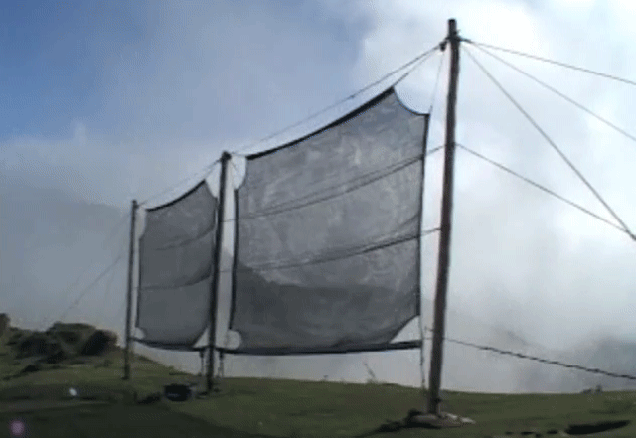
يک تيم از محققين آمريکايي با الهام گرفتن از نوع خاصي از سوسک دست به ابداعي خارق العاده زدند ، اين سوسک که در بيابان ناميب زندگي مي کند يکي از موجودات آفريقايي است که قادر به جمع آوري مولکولهاي مختلف هوا از طريق سيستمي در بال خود است . در ادامه با مشروح خبر گجت نيوز را همراي کنيد .
حالا محققین چنین ایده ای را گرفته و ماده ای تشک مانند ساختهاند که قادر است آبهای موجود در هوا را با استفاده از میلیاردها نانوتیوب کربنی خود جذب کند. این محققین برای رسیدن به این هدف دو لایه پلیمر که بر روی یکدیگر قرار داده شده اند را روی یک استوانه بسیار کوچک یک سانتیمتری ساخته شده از کربن نانوتیوب (اصطلاحا جنگل نانو) تعبیه کرده اند.

لایه بالایی این پلیمر آبدوست است و پایینی آبگریز میباشد.هنگام قرارگیری مولکول آب در نزدیکی پلمیر آبدوست، مولکول آب -بدون هیچ نیازی به نیروی خارجی- جذب شده و به داخل جنگل نفوذ داده میشود. به محض جذب آن، لایه ضدآب قادر میشود تا این نم یا مولکولهای آب را در ساختار ذکر شده ذخیره کند. سیستمی که دقیقا در بالهای سوسک بیابان نامیب نیز یافت میشود.
نکته جالب اینجاست که با فشار این جنگل (مانند اسفنج) میتوان آب ذخیره شده را به جای دیگری منتقل کرد.البته باید توجه داشت که این پیشرفت در مرحله نخستین قرار دارد. در تستهای اولیه مقدار هشت میلیگرم از این ماده تشک مانند، تنها توانست یک چهارم وزن خود را در 11 ساعت و البته در هوایی خشک جمع آوری کند. اما روزی را تصور کنید که پیشرفت شگرفی در این سیستم ایجاد شود… آیا این روش الهام گرفته شده از طبیعت میتواند یکی از راههای حل مشکل آب در این کره خاکی باشد؟
منبع : gizmodo
California’s running out of water. This year’s record-breaking drought—coming after two already dry years—has the state scrambling for the liquid stuff. Plans to seed clouds for extra snowfall are already in place. But do we really require storm clouds for water? Why not use fog?
San Francisco’s 2.08 inches of rain since July is the lowest ever recorded, but the city has no lack of water vapor in the sky. As any tourist trying to take photos of the Golden Gate Bridge can attest, Karl the Fog makes frequent appearances about those parts. And San Francisco blogger Burrito Justice has done the math:
Fog contains anywhere between 0.05 and 0.5 grams of water per cubic meter. Karl, being Karl, is obviously 0.5 grams. Assuming half the city is covered in fog at a depth of 1000 feet (i.e. the top of Twin Peaks):
49 square miles / 2= 63,454,700 square meters * 300 meters= 19,036,410,000 m3 * 0.5 grams= 9,518,205,000 grams = 9,518,205 kilograms = 9,518,205 liters = 2,514,440 gallons
Great! Except as Burrito Justice himself admits, there’s no feasible way to collect fog over half of the city—though he has some snappy mockups of Sutro Tower retrofitted as a fog collector though:
But it’s not a totally wacky idea. There is precedent for fog collectors in the world. And even if they can’t slake the thirst of a whole metropolis, they can do wonders for a small village in the mountains.
The Canadian non-profit FogQuest is devoted to setting up small-scale fog collectors in remote areas. Since 2000, the organization has built the mesh-like collectors in villages from Nepal to Ethiopia to Guatemala. It was cofounded by Sherry Bennett and Bob Schemenauer, an atmospheric scientist who first started collecting fog for research.
The mesh of these fog collectors is made from cost-effective polypropylene or polyethylene. Water droplets collect on the plastic, dripping down into a tank below. Depending on weather and location, a panel 13 by 26 feet can produce 40 to 200 gallons of water per day. They even work in desert areas that get as little as a millimeter of rain a year.
FogQuest’s plastic meshes are a modern spin on an ancient practice. From Israel to Egypt to Latin American, archeologists have found structures arranged to collect condensation from the air.
Animals, too, can drink water from the air. The Stenocara beetle of the Namib Desert, for example, sticks its rear end into the fog. A combination of water-repellant and water-attracting surfaces on its body channels water straight into its mouth.
Scientists in Australia have developed a synthetic surface mimicking the beetle’s body that could coat the roofs of houses for water collection. Using techniques both simple and sophisticated, fog collection is another way for humans to tap into the water cycle.
Of course, we’re a long way from implementing any of these systems on a broad scale stateside. But it’s interesting to imagine a future in which our skylines are retrofitted with wispy, water-producing infrastructure. [Burrito Justice – Columbia Water Center]
 گجت نیوز آخرین اخبار تکنولوژی، علم و خودرو
گجت نیوز آخرین اخبار تکنولوژی، علم و خودرو 





